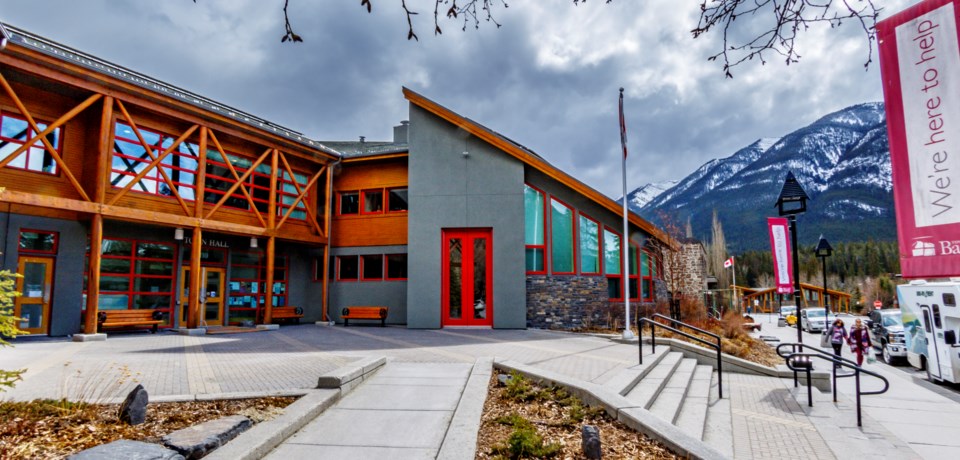BANFF – Banff’s town council has made some changes to its dollar transfers to the municipality’s water and sewer savings accounts to allow time for the community to recover from the economic fallout of the COVID-19 pandemic.
The 2022 and 2023 sewer utility rates will remain at the same planned increase of 6.1 per cent per year while the water rate for both years will see inflationary increases of 1.6 per cent in 2022 and an estimated two per cent for 2023.
However, the recommended sewer rate increase is 4.4 per cent each year from 2024-34 with water rates increasing by 4.2 per cent per year over that same timeframe. Starting in 2035, rates for both would be tied to inflation under the current proposal.
Council went with administration’s recommendation on annual transfers to the water and sewer reserves to have the lowest overall utility rate burden to the operating budget for the next 10 years, with no change to the existing 2022 and 2023 budgets.
“This option allows time to recover from the economic impacts due to COVID-19 while still achieving the goal of maintaining a positive reserve balance over the 110-year reserve forecast,” said Andrea Stuart, manager of finance for the Town of Banff.
Stuart said past studies assumed water and sewer consumption would remain flat, with revenue increases coming only from rising fees; however, a review of actual consumption shows it declined from 2016 to 2019.
She said that’s likely due to improved environmental practices and the impacts of COVID-19, which led to a drop in visitation in 2020.
“It is expected COVID-19 will continue to impact consumption and revenue until 2024 when pre-pandemic consumption levels are estimated,” she said.
For water, the year-over-year increase in transfers for 2022 and 2023 would remain consistent with the previously approved operating budget with increases to reserve transfers of 48 per cent and 39 per cent, respectively.
Stuart said this large increase is due to the assumed return to 2019 water consumption rates by 2024, and not driven by utility rate increases. The following 11 years would see year-over-year jumps average 6.1 per cent from 2024-34.
“The 6.1 per cent increase would be driven by a utility rate increase,” said Stuart.
As for the sewer reserve, the year-over-year increase in transfers for 2022 and 2023 would remain consistent with the previously approved operating budget, with increases to reserve transfers of 60 per cent and 42 per cent, respectively.
The next 11 years would see year-over-year increases average 6.1 per cent from 2024-34.
Stuart said the large increases in the first two years, again mainly due to the assumed return to 2019 consumption rates by 2024, are somewhat less driven by the annual utility increase.
“A 6.1 per cent utility rate increase was previously approved to 2028. This would therefore be a six-year extension of a utility rate increase through to 2034,” she said.
Councillor Peter Poole unsuccessfully tried to convince his council colleagues to go with a different option, with a one-time 40 per cent increase in transfers to the water reserve and a one-time increase of 47.5 per cent in transfers to the sewer reserves – both in 2024.
All remaining years after 2024 would go up by the rate of inflation.
Coun. Poole said he fully appreciates the concern of not causing additional costs for residents and businesses as they cope with the fallout of the pandemic, but noted exponential growth will see them face a big hit in the later years.
“What we have to do is say ethically, ‘is it right for us to take the hit now because we’re the ones using it, or to displace the burden to a future group of people?’” Coun. Poole said.
“I just caution you that the 6.1 per cent increase over the 11 years causes the last few years to be particularly steep and there will be some push back at that time.”
But Councillor Brian Standish couldn’t support that and preferred administration’s option.
“We’re in economic fallout and we can’t fix this economic fallout in a one-year budget or even in a three-year budget cycle,” he said.
“This recovery has to be a gradual process so I cannot possibly support a 40 per cent and 47.5 per cent increase in two years: we’re just not ready for that.”
Mayor Corrie DiManno also went with administration’s option, noting this is a guiding document on how the budget will be built and for the next council to decide on the rates.
“I would want to stick with what has the least impact during this whole recovery process,” she said.
The Town of Banff has established several reserves – the so-called savings accounts for the municipality – to fund the replacement of capital assets over time.
In 2012, administration began reviewing the adequacy of the capital reserves to replace and maintain assets over a 110-year period.
As of 2021, water and sewer assets have an adjusted cost of $36 million and $94 million respectively for a combined cost of $130 million, which represents approximately 39.4 per cent of the total Town of Banff’s tangible capital assets of $330.3 million.
The water capital reserve is used to fund water treatment and distribution assets such as mains, pump stations, meters and reservoirs, while the sewer reserve pays for sanitary sewer treatment and collection infrastructure like mains, lift-stations and wastewater treatment plant infrastructure.
“The annual transfers to reserves currently serve to close any deficits as well as fund future asset replacements,” Stuart said.




